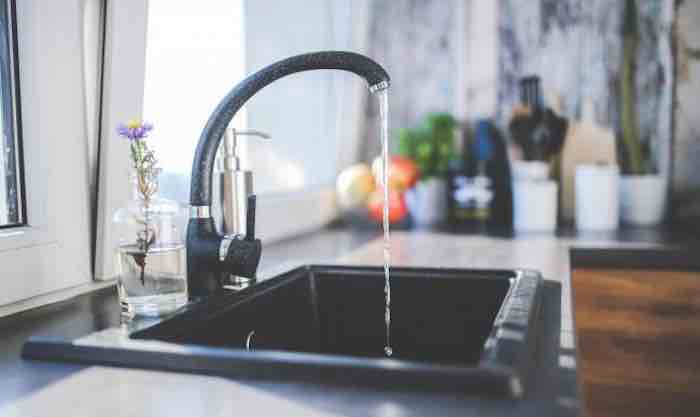Bromate and Bromide -- Fire and Brimstone?

The Herts County Council in Great Britain is having a problem with “bromate” and “bromide”
ions in the groundwater there. They could pollute the local drinking water resource.
As it turns out, this is nothing new there. In fact, the situation was first recognized two or more decades ago and remedial actions have been ongoing for about ten years now and are still continuing to this date. The bromate/bromide source was a chemical factory, in operation between 1955 and 1980 that manufactured or used “bromate” and “bromide” in their works.
What are Bromate and Bromide anyway?
Their names surely do sound strange. Are these things some sinister materials, perhaps associated with witches’ concoctions, like in Shakespeare’s Song of the Witches “Double, double toil and trouble…”?
Well, dear Reader, for chemists like me, it’s nothing special. These ions, or substances if you wish, are simple derivatives of the element bromine that is very similar to the element chlorine.
Any time you sprinkle some salt on your food, you are adding “chloride,” sodium chloride to be exact. It is quite common in nature. Not only are there large deposits underground from dried-up sea-beds on land, the oceans are full of dissolved “chloride,” to the tune of 35 grams/L, or 3.5 percent. At a combined volume of 1,332,000,000 cubic kilometers of the world’s oceans, that means that they contain somewhere around 35x10^6 x 1.3x10^9 = 45x10^15 (metric) tons of rock salt (sodium chloride).
That seawater, covering approximately 70% of the earth’s surface, also contains a mountain of bromide salts. Not quite as tall as the mountain of rock salt but still in the order of “only” 25x10^13 tons of bromide salt.
In addition, there are also many organic bromine components in the oceans, all naturally formed by algae, kelp and other organisms.
What are their Effects?
As you may know already, when running short of potable water on the ocean, the last thing you should do is drink it. It will definitely kill you soon thereafter. However, that’s not because sodium chloride is poisonous (after all, you may use it daily in cooking and eating), but because of the strong ionic imbalance that comes with consuming seawater. It will simply de-hydrate your vital organs to the point of no return. In this aspect, chloride and bromide salt are essentially identical.
In contrast, “bromate” is somewhat different. It is a bromide” with some oxygen atoms attached to it. That makes it a potent oxidizer and more toxic than simple “bromide.” The only “LD50” (lethal dose to 50% of the test population, intraperitoneal exposure of mice) I could find dates back to a French publication of 1963 from authors at the
Centre de Recherches du Service de Santé des Armées in Lyon, France. This LD50 value is 140 milligram/(kg body weight). However,
other studies have reported LDLo (nil or lowest dose effect) levels to other organisms at even higher bromate exposures. Those toxicological tests appear to be reasonable and reliable results. The data also show that bromate was approximately 45 times more toxic than bromide. No surprise there.
You may still wonder though, what level of bromate is safe?
What level of Bromate is safe?
According to British Health advisories, they consider a level of 10 microgram/L of bromate as a safe level for potable water. This was updated from an even lower level in the year 2014.
What is the legal reference for that? That’s where things become a bit wishy-washy. The applied reference is the British legal code developed for radioactive substances (Environmental Protection Act 1990, Part IIA).
Furthermore, the 10 microgram/L limit appears to have been adopted wholesale from a U.S. standard on the basis of a “safety factor” (SF) of 10,000 to the (one and only) measured LD50 value. This large SF was applied on the basis of a “possible” carcinogenic effect of bromate ions.
Of course, one could apply such possible effects to just about anything natural in the water, or food, or air. Moreover, similar bromo-oxygenate ions, for example sodium hypobromite, are commonly used to disinfect pools and hot tubs. They are even more reactive than “bromate.”
In Summary then
I think the concern over bromate and even more so about bromide levels is blown out of proportion.
But, if it makes you happy, keep calm and carry on.
Dr. Klaus L.E. Kaiser -- Bio and
Archives |
Comments
Dr. Klaus L.E. Kaiser is author of CONVENIENT MYTHS, the green revolution – perceptions, politics, and facts Convenient Myths

 The Herts County Council in Great Britain is having a problem with “bromate” and “bromide” ions in the groundwater there. They could pollute the local drinking water resource.
As it turns out, this is nothing new there. In fact, the situation was first recognized two or more decades ago and remedial actions have been ongoing for about ten years now and are still continuing to this date. The bromate/bromide source was a chemical factory, in operation between 1955 and 1980 that manufactured or used “bromate” and “bromide” in their works.
The Herts County Council in Great Britain is having a problem with “bromate” and “bromide” ions in the groundwater there. They could pollute the local drinking water resource.
As it turns out, this is nothing new there. In fact, the situation was first recognized two or more decades ago and remedial actions have been ongoing for about ten years now and are still continuing to this date. The bromate/bromide source was a chemical factory, in operation between 1955 and 1980 that manufactured or used “bromate” and “bromide” in their works.